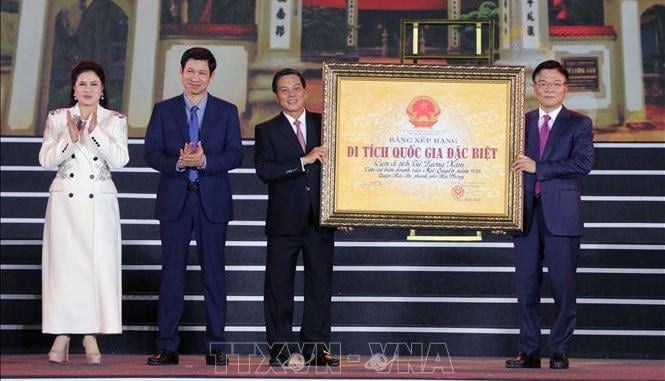 |
Mr. Le Thanh Long, Deputy Prime Minister, awarded the Certificate of National Special Monument ranking for the Tu Luong Xam Relic Complex - Ngo Quyen's headquarters in 938 to Hai Phong City. |
Deputy Prime Minister Le Thanh Long attended and awarded the Certificate of National Special Monument ranking for the Tu Luong Xam Relic Complex - Ngo Quyen's headquarters in 938 to Hai Phong.
Among the Ngo Quyen worshiping relics in Hai An district, the historical relic of Tu Luong Xam area - Ngo Quyen's headquarters in 938 is honored as "Tu Ca" - that is, the leading place to worship Ngo Quyen. This was once the military headquarters and food storage place of Ngo Quyen in the victory over the Southern Han army on Bach Dang river in 938.
After King Ngo Quyen passed away, Luong Xam villagers built a temple to pay their respects and honor the nation's outstanding hero. Over time, with many historical events, the historical site of Tu Luong Xam - Ngo Quyen's headquarters in 938 today is a spiritual and religious gathering place for many local people and visitors from all over the country, and always plays a role as one of the key relics of Hai An district.
King Ngo Quyen is one of the 14 typical national heroes of Vietnam. In 938, he led the soldiers and people to defeat the Southern Han army in the historic battle on Bach Dang River, ending more than 1,000 years of Chinese domination, opening a long-lasting era of independence for the Vietnamese people. With Ngo Quyen's merits, many dynasties bestowed upon him the title "The Supremely Spiritual Great King, the Son of Ngo, the founder of the nation".
The Tu Luong Xam relic complex, a special national relic site dedicated to King Ngo Quyen, still preserves historical evidence of a heroic battle on the Bach Dang River with many great historical values left for posterity today. Legend has it that in preparation for the Bach Dang battle in 938, Ngo Quyen chose this place as a place to store food, a place to set up a headquarters to observe and command the historic Bach Dang battle. He chose a favorable location to directly command the construction of stakes, arrange forces, and organize ambushes ready to destroy the invading army of Southern Han.
The Bach Dang victory in 938 was recorded in the history of our nation's fight against foreign invaders as a brilliant feat, marking an important historical milestone, ending the thousand-year domination of Northern feudalism, opening a period of true and lasting independence for our nation.
There are still traces of the palanquin road of that time. One of the things that makes the historical value of the Tu Luong Xam National Monument special is that this place preserves artifacts throughout the long heroic period of building and defending the country of the nation, including: 125 artifacts, antiques and 25 royal decrees dating from 1522 to 1924 of the Le So, Mac, Le Trung Hung, Tay Son, Nguyen dynasties. In particular, this place also preserves 3 stakes that are considered evidence of the historic Bach Dang battle in 938.
With those values and meanings, in 1986, Tu Luong Xam was included in the list of national historical and cultural relics by the Ministry of Culture (now the Ministry of Culture, Sports and Tourism). In 2022, the Tu Luong Xam Traditional Festival was recognized by the Ministry of Culture, Sports and Tourism and included in the list of national intangible cultural heritage.
Speaking at the ceremony, Mr. Ho An Phong, Deputy Minister of Culture, Sports and Tourism, emphasized that in order to preserve and promote the sustainable value of the Tu Luong Xam special national relic and the Tu Luong Xam Festival, the Ministry of Culture, Sports and Tourism requested Hai Phong city and Hai An district to pay attention to developing a master plan for relic conservation; implementing boundary markers for the relic protection area in the field; developing a plan for maintenance, restoration and embellishment of the relic; implementing the Project to preserve and promote the value of the Tu Luong Xam Festival heritage; at the same time, continuing to research, collect and excavate archaeological sites to further clarify the history of the area where the relic is located; organizing extensive propaganda of the historical, cultural, scientific and aesthetic values of the relic; the good values of the Festival in the cultural life of the community, linking socio-economic development and tourism, contributing to building and fostering national pride, educating patriotic traditions; become an attractive tourist destination for domestic and foreign tourists.
Source: https://huengaynay.vn/van-hoa-nghe-thuat/trao-bang-xep-hang-di-tich-quoc-gia-dac-biet-cho-can-cu-ban-doanh-cua-ngo-quyen-150768.html



![[Photo] The Standing Committee of the Organizing Subcommittee serving the 14th National Party Congress meets on information and propaganda work for the Congress.](https://vphoto.vietnam.vn/thumb/1200x675/vietnam/resource/IMAGE/2025/11/19/1763531906775_tieu-ban-phuc-vu-dh-19-11-9302-614-jpg.webp)

![[Photo] General Secretary To Lam receives Slovakian Deputy Prime Minister and Minister of Defense Robert Kalinak](https://vphoto.vietnam.vn/thumb/1200x675/vietnam/resource/IMAGE/2025/11/18/1763467091441_a1-bnd-8261-6981-jpg.webp)
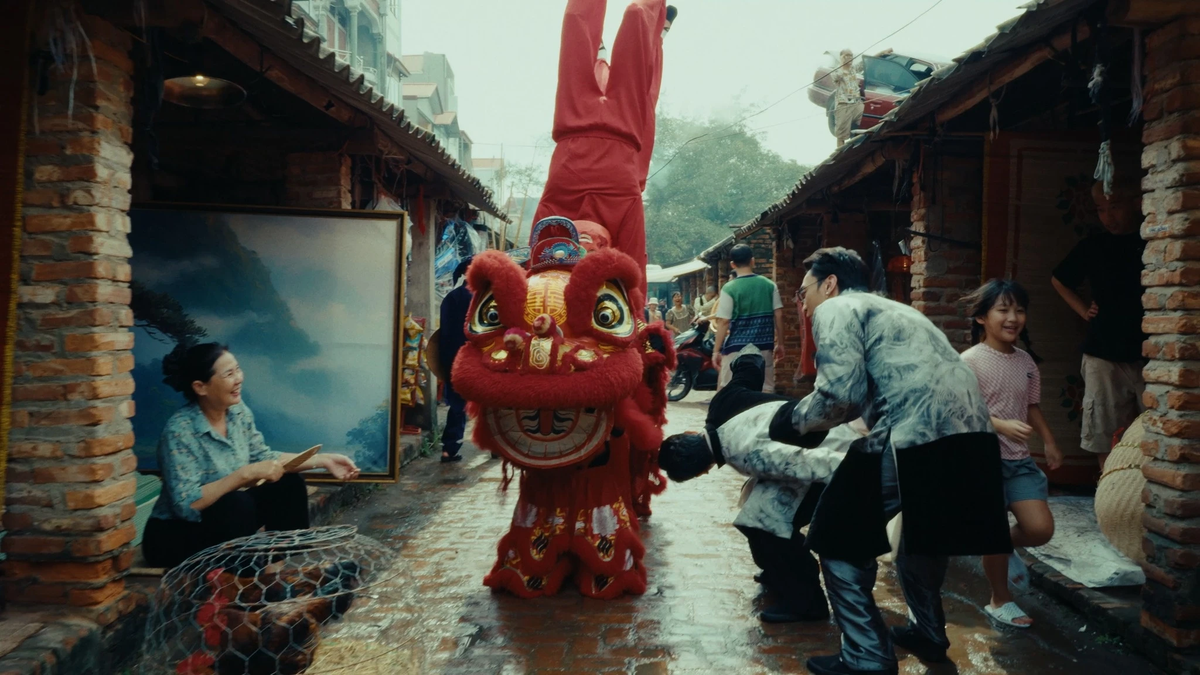
![[Photo] Prime Minister Pham Minh Chinh and his wife meet the Vietnamese community in Algeria](https://vphoto.vietnam.vn/thumb/1200x675/vietnam/resource/IMAGE/2025/11/19/1763510299099_1763510015166-jpg.webp)


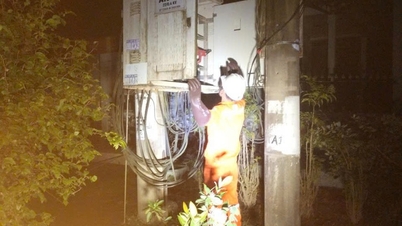


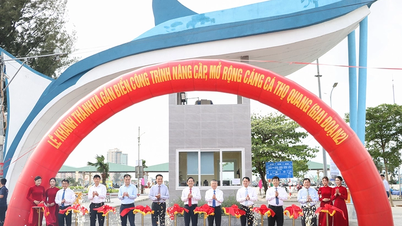
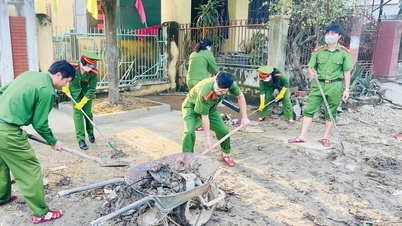





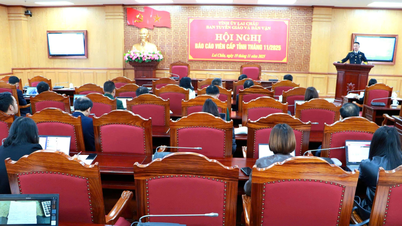
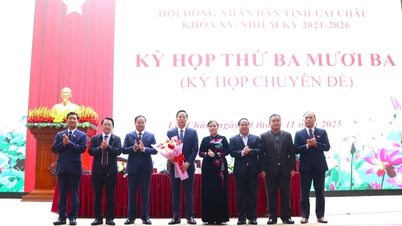
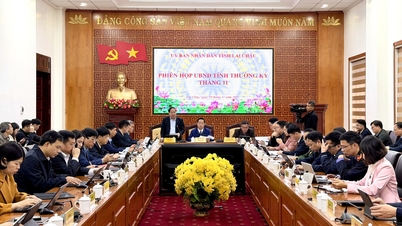
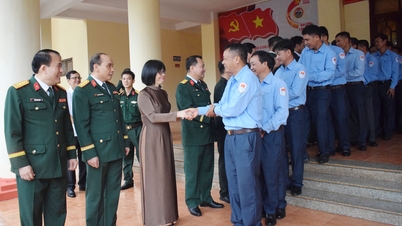

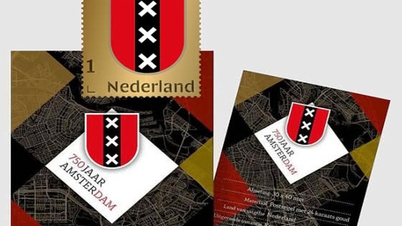




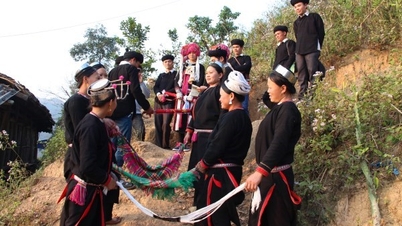



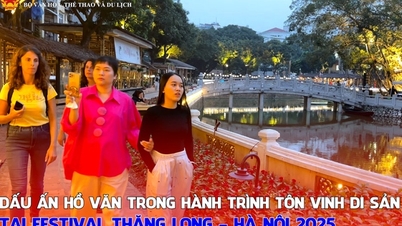

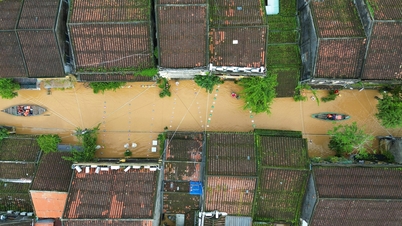

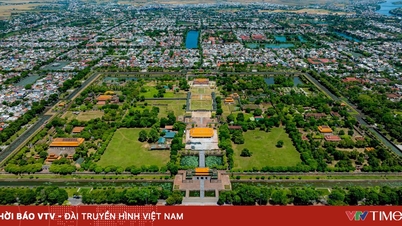





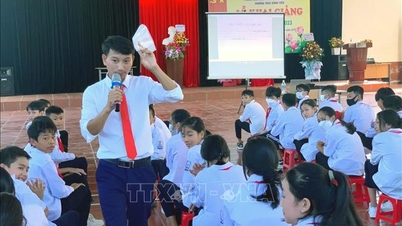

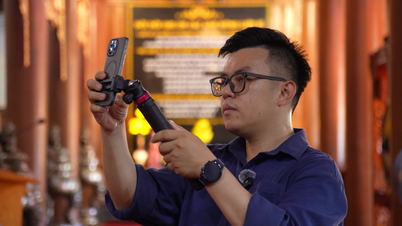

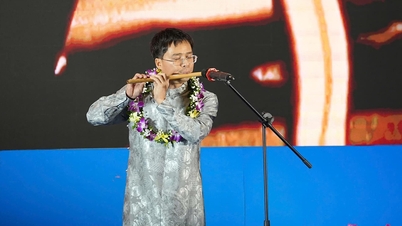







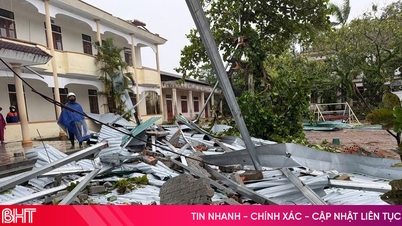


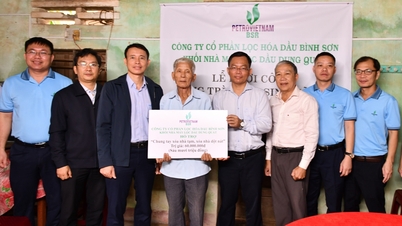


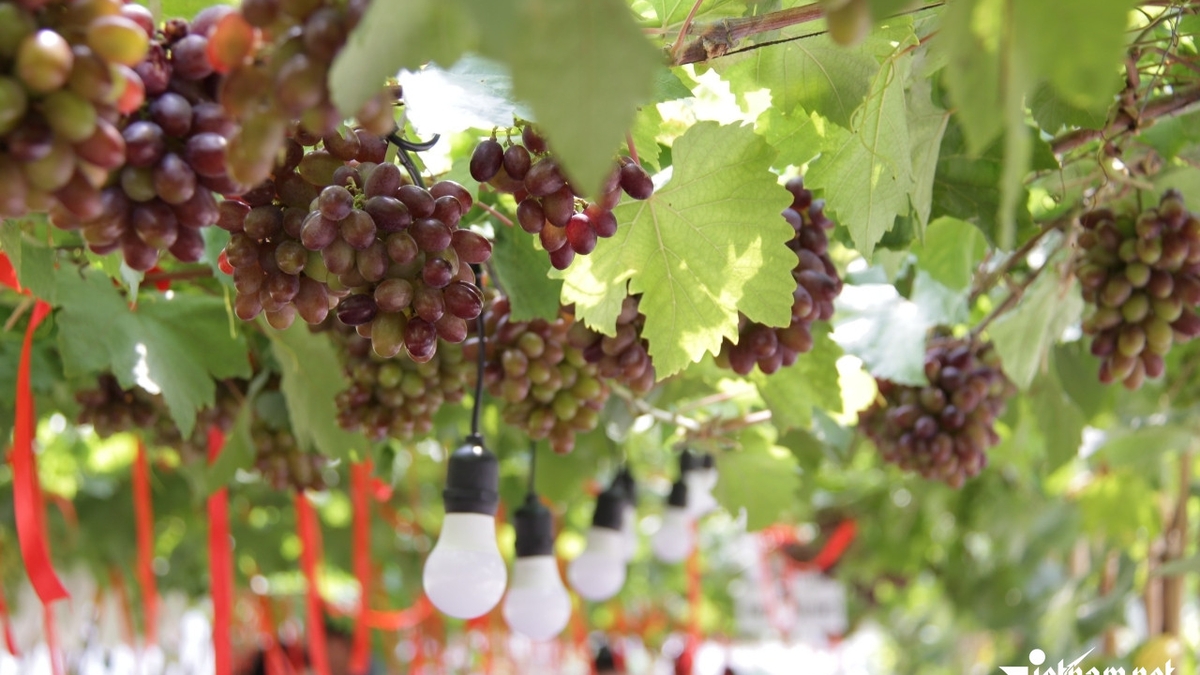



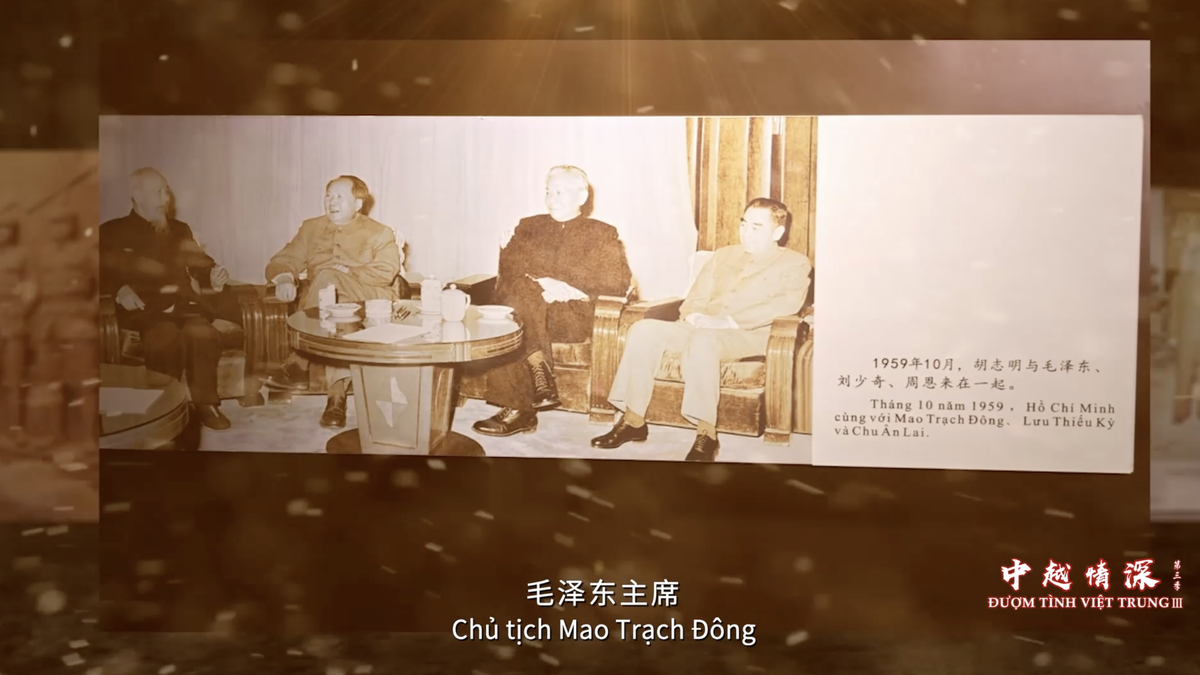














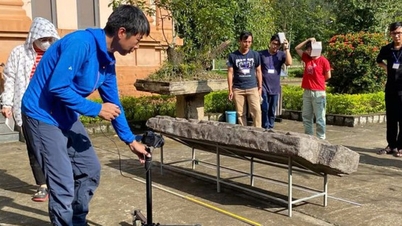
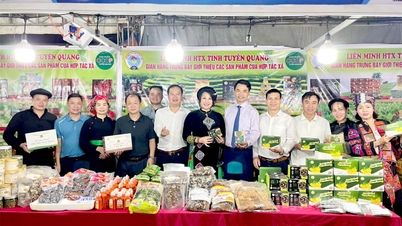

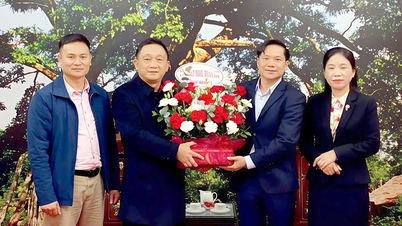



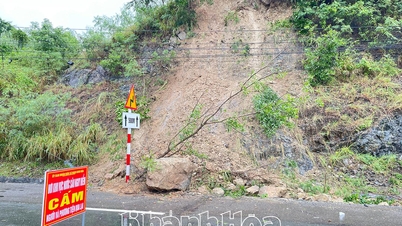


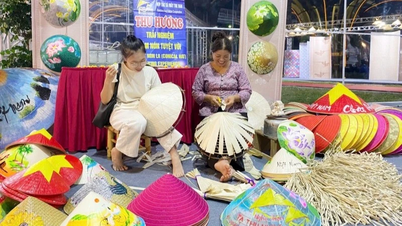



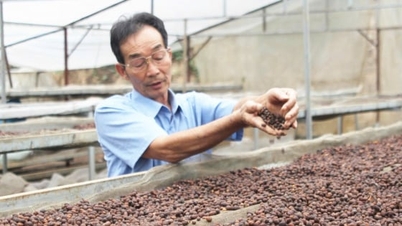







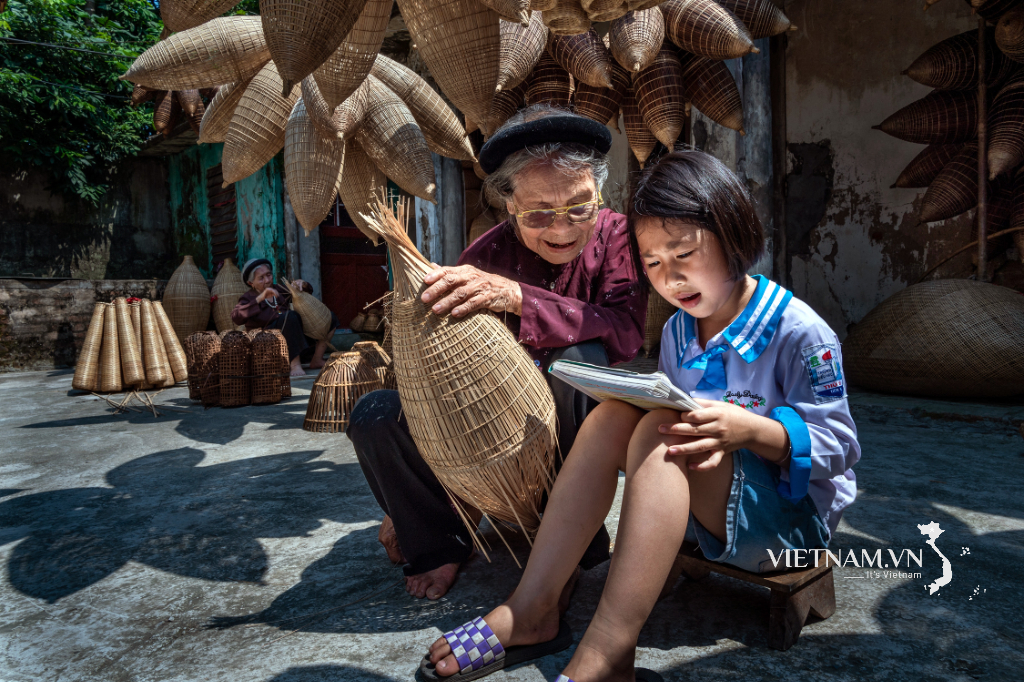
Comment (0)